Reading the crowd
How DJs read the crowd for better sets
A DJ needs plenty of different skills, many of which are technical. But there’s one skill above all others that every DJ needs to have, no matter what musical genre, venue or reason for DJ-ing.
You MUST master the art of reading the crowd.
Reading the mood of the dance floor is an art form in itself. Understanding the energy of the venue, how its changing and what you can do to control it, all make the art of DJ-ing what it is.
Without this skill you are doomed to fail. So I’ve put together this ultimate guide to reading the crowd at any DJ gig. Follow this and you’re on your way to DJ super-stardom!
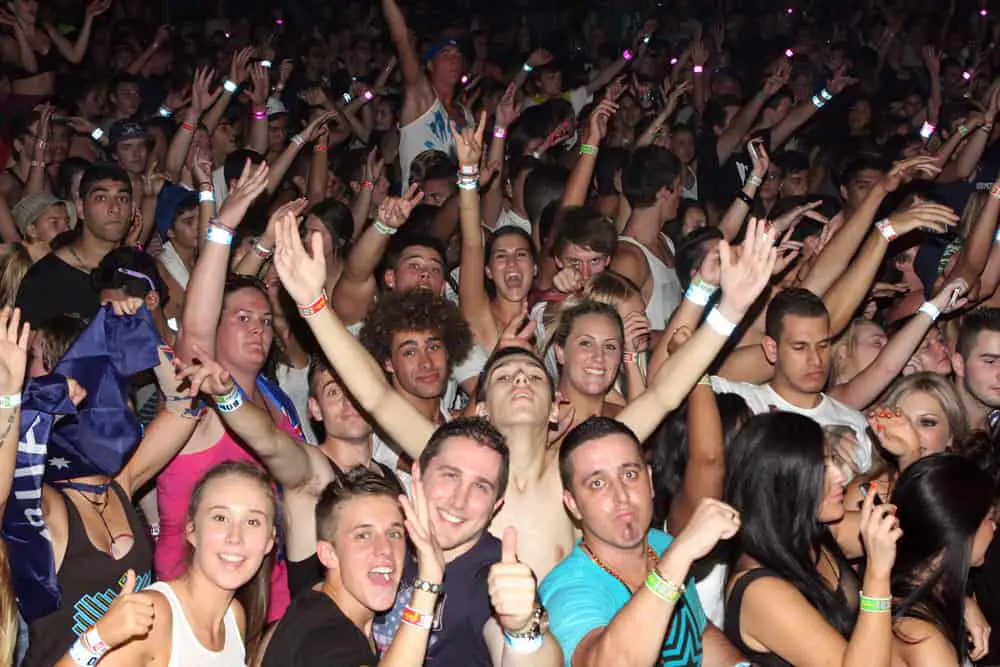
- What reading the crowd really means
- Understanding the venue you're playing in
- How musical genres affect crowd response
- How to read the crowd and give them what they want
- What to do now you've read the crowd
- What to do if you read the crowd wrong!
- How to take the crowd on a musical journey
- How long it takes master the art of crowd reading
- How to always nail reading the crowd
- How reading the crowd gets easier with time
So lets start at the beginning and understand what it is we really mean by “reading the crowd”, as it may be your interpretation of this skill is different to what we mean here.
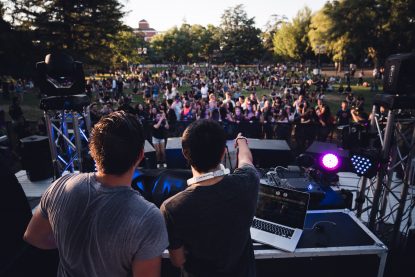 When DJs read the crowd we mean they are watching, listening and analysing how the crowd is reacting to the music they are playing. They do this on an almost constant time-frame, checking to see if the music they are playing is having the desired effect.
When DJs read the crowd we mean they are watching, listening and analysing how the crowd is reacting to the music they are playing. They do this on an almost constant time-frame, checking to see if the music they are playing is having the desired effect.
Just how much crowd analysis needs to go on depends on the type of DJ, the venue, the crowd on that night and a number of other more subtle factors, but the most important thing to understand is that without reading the crowd your awesome beat-matching and seamless transitioning skills mean nothing. People will remember you for the selection of tracks you played more than anything else.
While individually your tracks might be awesome, if they are played at the wrong time when the energy of the gig was heading in a different direction, they can be jarring, killing the mood instantly. You’d be surprised how crowds can turn on you if you ruined the buzz they were getting from the music you were playing.
DJs come in all shapes and sizes, covering singular or multiple musical genres in any given gig. Whatever type of DJ you are, you need to learn to read the crowd to keep them happy, and if you’re clever enough even take them on a musical journey! More on that later.
Imagine this scenario:-
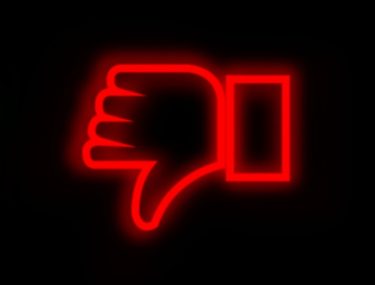 You’ve played 3 or 4 songs in a row, the energy is building and everyone is throwing their arms in the air, clapping and cheering just for you!
You’ve played 3 or 4 songs in a row, the energy is building and everyone is throwing their arms in the air, clapping and cheering just for you!- You think you’re about to take the crowd to new heights with the next track
- You transition it in and….. Uh oh the crowd are really not feeling this new direction!
- Oh dear!
- For reasons unknown the crowd are turning on you! Boo!
- People head to the bar for another drink, or they leave the festival tent for entertainment elsewhere. Or even worse you get thumbs down signs!
Its your job as a DJ to make sure this rarely ever happens happens! And on the odd occasion you make a mistake you need to know how to get yourself out of it quick! Never fear all the answers are in this article. Keep reading.
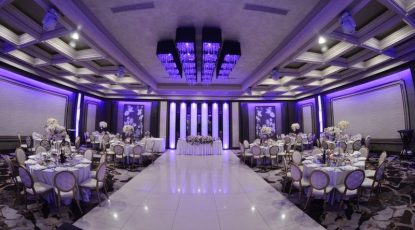 I’m going to jump in right here with some advice I think a lot of DJs overlook. They think its all just about what songs you play and what the crowd think of them.
I’m going to jump in right here with some advice I think a lot of DJs overlook. They think its all just about what songs you play and what the crowd think of them.
Let me tell you right now there’s WAY more factors than just your selection of music that can influence a crowd’s reaction to it.
One of the biggest that can really affect the crowd response and how well you can read the crowd is the venue you’re DJ-ing in.
There’s a number of factors here that will have an influence on the crowd’s enjoyment
- How large the venue is compared to its capacity (are people crammed in our spaced out)
- How large the official dance floor area is
- Is there seating around the edges? (Often at wedding receptions)
- Does the sound system fill the space well? (Not too big, not too small)
- Is the volume overpowering or does the sound reverberate around the venue?
- Is the bar in the same room as the dance floor?
- Are there other distractions or rooms nearby that your crowd could disperse in to easily?
All these factors and more are related to the layout of the venue and can drastically effect whether playing the wrong song at the wrong time will cause an exodus from the dance floor, or conversely a stampede to fill it if you get it right!
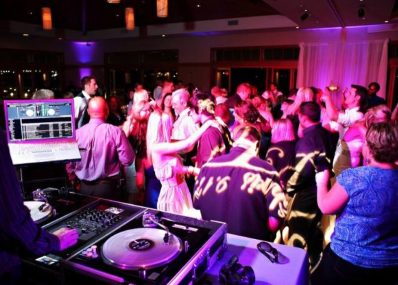 If there are chairs nearby people will tend to “sit this one out” if they’re not feeling it. All too easy for the crowd to do at weddings and other private parties. If the bar is in another room at the club or venue then you’ll be losing (and hopefully gaining) punters who feel a thirst coming on. Your bad choice of song might be just the reason they decide to exit the dance floor.
If there are chairs nearby people will tend to “sit this one out” if they’re not feeling it. All too easy for the crowd to do at weddings and other private parties. If the bar is in another room at the club or venue then you’ll be losing (and hopefully gaining) punters who feel a thirst coming on. Your bad choice of song might be just the reason they decide to exit the dance floor.
If the venue is too big for the crowd using it then you’ll tend to find the energy of the room dissipates making it harder to keep the excited vibe going for long periods of time. On the flip side a densely packed small venue might seem great and super busy but the cramped nature of it may put people off so if the next song isn’t for them, they’ll soon choose to duck out.
All sorts of things can annoy the crowd but many of them can be overlooked if they’re loving the music you’re playing. This is why reading the crowd is so important. You can be fighting against all sorts of venue flaws that you may not have been aware of.
Crowds will lose themselves in your music, up until the point where they’re snapped back to reality, something a badly timed song, dodgy mix or inappropriate musical genre can easily do.
Analyse the venue
 So the solution is simple. Make sure you analyse the venue before the gig. Do this days or weeks before if you have the time but if not it can be done on the night too.
So the solution is simple. Make sure you analyse the venue before the gig. Do this days or weeks before if you have the time but if not it can be done on the night too.
Think about what factors might cause issues for your audience. It doesn’t matter if they’re small or large, great music can often overlook these little issues, but read the crowd wrong and they grow in magnitude.
Think about the size of the venue, the acoustics, the crowd size you’re expecting, where the bar is, where the toilets are. If its a ticketed event ask how many have been sold. If any are available on the door. Even things like what time the bar stops serving (if part or all of your set is after this then it can have an influence)
By all means make notes so that you can keep them by the DJ controller and glance at them every so often. Remember reading the crowd is the most important skill a DJ needs to have so a reminder is always a good thing to have when contemplating your next track.
Another important factor is musical genres. There’s a couple of scenarios here so its important we talk about them both.
Singular genre DJ sets
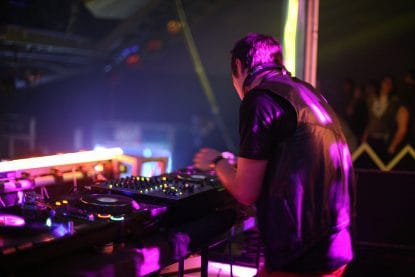 This would apply to some nightclub DJs who are known for playing a single musical genre. Maybe the club night is just drum & bass, or deep house, funky house or something in between. When the crowd are expecting one type of music reading the crowd is a very different skill to that needed by multi-genre DJs.
This would apply to some nightclub DJs who are known for playing a single musical genre. Maybe the club night is just drum & bass, or deep house, funky house or something in between. When the crowd are expecting one type of music reading the crowd is a very different skill to that needed by multi-genre DJs.
When you’re DJ-ing a specific type of music you need to be aware of the potential energy stored in every tune you play. No doubt you love some of the tracks you’ve chosen because they invoke a reaction in you. That spine tingling feeling, or sense of excitement they could unleash on your audience.
Sometimes this reaction is your preferences speaking to you, not the preferences of the crowd that will be at the gig you’re about to play. This discrepancy is what can lead to a confusing surprise once you drop the tune during your DJ set. What worked perfectly in your head just didn’t work when played live.
I’ve seen this happen in all sorts of musical genres. The potential energy in the track dissipating due to the time of night, energy levels of the crowd from previous sets by other DJs or songs that have been played. Or of course the influence of the venue and its flaws as mentioned earlier. Sometimes there’s no telling what sets off the downward spiral on any given track.
The good news is with a singular genre set reading the crowd incorrectly is less likely to happen, since the crowd are expecting you to play one particular genre and have probably been listening to it all night too. The chances of being so surprised by your musical selection that its a turn-off is reduced.
Never-the-less reading the crowd is still vitally important. In fact in some ways its more so as your crowd have expectations of the songs you’ll play. Your job is to meet those rather fluid expectations as well as exceed them. Its often the “exceed” part that causes the issues where your musical journey or little musical surprises may fall on deaf ears.
Multiple genre DJ sets
 If you’re tasked with playing multiple genres in an evening then reading the crowd is vitally important and much more of a dynamic aspect to DJ-ing that requires constant analysis and lightening fast reactions.
If you’re tasked with playing multiple genres in an evening then reading the crowd is vitally important and much more of a dynamic aspect to DJ-ing that requires constant analysis and lightening fast reactions.
The crowd are likely to have less expectations on what music the DJ plays, at least publicly accessible expectations. Secretly they’re all hoping to hear their favourite songs and will be entering with differing levels of energy and excitement for the party.
Also a key difference between single and multiple genre gigs is that most single genre gigs are in a club or clubbing venue where people generally go to dance. Whereas multiple genre gigs tend to be a part of some private party like a wedding, birthday or other such occasion. Where catching up with friends and family, sitting and eating meals, and generally avoiding getting embarrassed on the dance-floor are extra factors that can sway a crowd’s response to your music.
As you’ll be switching between musical genres, potentially all evening, you’ll no doubt be surprising people with your selection of tracks on an almost minute-by-minute basis so the chances of changing the mood of the dance floor is very high!
Some you’ll win and some you’ll no doubt lose. The aim of the game is to win as many times as you can. This is where the art of reading the crowd really shows just how good a DJ you are.
So now you know what can influence a crowd and their reaction to your music. Its time to figure out just how you can read the crowd and exactly what each of the methods can tell you.
Lets take a look a the key methods of reading the crowd while DJ-ing.
Watching how the crowd are dancing together
 The crowd is one big swaying entity, like a murmuration of birds following each other in the sky. There’s no point singling out one particular person when you’re reading the crowd (thats a little creepy!) just scan the room and see how they’re reacting to the music.
The crowd is one big swaying entity, like a murmuration of birds following each other in the sky. There’s no point singling out one particular person when you’re reading the crowd (thats a little creepy!) just scan the room and see how they’re reacting to the music.
Are they losing themselves in the moment? Are they dancing with increased intensity. Are they busting out some new moves or are they losing the will to dance and its clear the energy is waning?
You’ll be able to tell from looking at the crowd whether its thinning out, or whether more people are joining. If people leave it tends to give a visual cue to other dancers that they could also duck this one out. This doesn’t promote the idea of bystanders then joining the dance floor, so it can quickly lead to a mass exodus! Definitely not what you want.
Remember what these actions look like. You’ll notice patterns throughout the night of the ebb and flow of crowd interactions with each other and your music. Venue layouts can make this harder or easier to read the crowd but overall its about seeing visually what the crowd as a whole are up to and how each song is affecting them.
Listening to the sounds the crowd are making
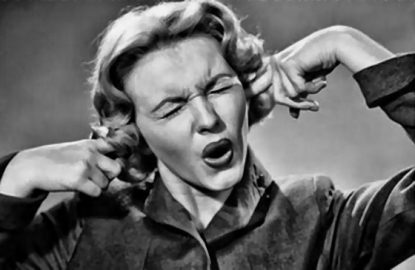 This one might seem dumb as your music is likely drowning out any chance of actually hearing what they are saying. By listening I actually mean picking up on visual cues of people talking to one another.
This one might seem dumb as your music is likely drowning out any chance of actually hearing what they are saying. By listening I actually mean picking up on visual cues of people talking to one another.
Why is this important when reading the crowd? Because people often talk as they dance! Whether its hollers of joy, shouting words of affirmation, or berating the DJ for his sudden and uninspiring musical choice.
Chances are you wont actually hear what they say but you’ll no doubt be able to tell just by looking at some of them whether what they’re saying is positive or negative.
Its important to remember that one or two people’s opinions might not mean all that much. But on the other hand it could be a hint that what you’re playing isn’t what the crowd are after. Look around and try and tell whether whats being said looks positive or negative.
The downside to this method? Well they might not be talking about you at all! So be careful when you’re scanning the room for conversations that may or may not be able the music you’re playing.
This analysis method works best immediately after you transition to the new track, see if their audible reactions are what you were hoping for.
Being aware of what time it is
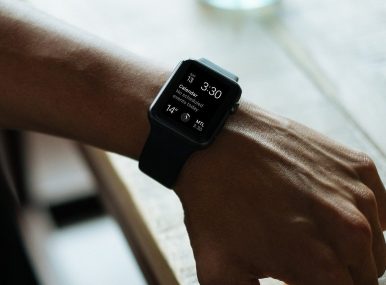 Energy levels at an event can and will change over time. So what does work at one time isn’t necessarily going to work at another time of the night. Conversely the song that bombed earlier might not be a clear indication that something similar would bomb again.
Energy levels at an event can and will change over time. So what does work at one time isn’t necessarily going to work at another time of the night. Conversely the song that bombed earlier might not be a clear indication that something similar would bomb again.
It’s always worth keeping an eye on the time, whether you’re DJ-ing all night or just need to be aware of what time of night your DJ Set is at, the time can make all the difference.
Keep in mind how much energy the crowd might still have, is the night just getting started? Or have they been dancing for hours by this point? Are they still relatively sober or are they on their 5th round of shots?
Because of influential factors like alcohol, temperature and humidity inside the venue, acoustics, even what DJs played before you, playing the right music at the right time is a huge factor in your playlist’s success.
Being aware of the schedule
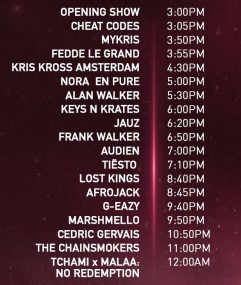 This applies to both private parties and club nights where there’s more than one DJ.
This applies to both private parties and club nights where there’s more than one DJ.
Its important to know at what part of the evening you may be at. For private parties that’s things like sit down meals, speeches and cutting the cake at weddings. For club nights its knowing what DJs played before you and what energy levels their set lists provided.
If its possible get a list of the schedule with rough times they might be happening. Its important to know whats gone before your allotted DJ-ing time and what might interrupt it too.
At private parties there’s often interruptions that will reset the energy levels in the room. Launching back in with something inappropriate for the schedule isn’t going to go down well with your audience.
At club nights its good to know what kind of energy levels previous DJs achieved and what musical journeys they may have taken the crowd on. This DJ schedule isn’t always available and you may not always have that knowledge to hand but if you can get it then its worth utilising.
Constantly watching for changes in room energy
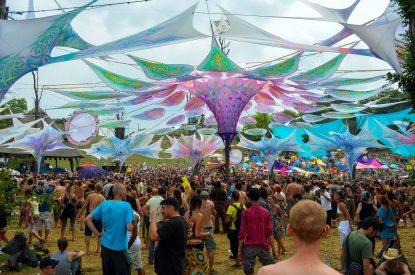 All of the above is great advice but its all for nothing if you don’t keep a watch out during your entire DJ gig. There’s no point just watching after each transition, or momentarily looking up at the crowd to see how they’re feeling. Reading the room as a DJ is a constant vigilant watch. Every time a DJ is looking up from their decks they are scanning the crowd for signs that the playlist is having the desired effect.
All of the above is great advice but its all for nothing if you don’t keep a watch out during your entire DJ gig. There’s no point just watching after each transition, or momentarily looking up at the crowd to see how they’re feeling. Reading the room as a DJ is a constant vigilant watch. Every time a DJ is looking up from their decks they are scanning the crowd for signs that the playlist is having the desired effect.
While you might need to concentrate on beat-matching or transition mixing for parts of the time, a lot of time needs to be spent keeping an eye on just how the crowd is reacting. Thinking what to do next and whether your awesome playlist is in fact as awesome for this crowd as it is to you.
Remembering how the crowd reacted to previous songs
Most songs fall in to certain categories or energy levels. You’ll get a feeling for how some songs are likely to change the mood of the party and have a positive effect.
So remembering how previous songs you’ve played affected this crowd you have right now can be key to predicting their reactions to future songs in your playlist.
Remembering their reactions involves memory of all of the above methods of reading the crowd when DJ-ing.
If you tried a particular energy level of song earlier or a particular genre that fell flat, will it work if you try it again? Has the time of the evening had an influence? Are you willing to risk it? That’s up for you to decide. Armed with all the knowledge of your current crowd and remembering how they reacted to previous songs might just be your answer.
So now you know the key to reading the crowd. Just what are you going to do with this information?
You have a few choices here. Depending on what your original plan was. The important question is this..
Do the crowd like the direction you’re going in?
 This applies to whether you’re playing a single genre for your entire gig or are free-styling it over multiple genres in an evening. If you’ve done a good job of reading the crowd you’ll be able to gauge if the music you’re playing is going down well with the audience.
This applies to whether you’re playing a single genre for your entire gig or are free-styling it over multiple genres in an evening. If you’ve done a good job of reading the crowd you’ll be able to gauge if the music you’re playing is going down well with the audience.
If you already have a set list then you can now apply this knowledge to your next track. This is why its also vitally important to know your music library well. You can of course preview your next track in your headphones but its good to quick scan through and think about whether this next track will also have the desired effect.
Maybe you’re looking to increase the energy levels, going by the crowd’s reaction to your set list so far is that still likely to work with the next track?
Maybe you’re looking to change direction are multiple higher-energy tracks. This diversion is always risky but so rewarding if you can do it well. Maybe toning down the energy levels with a new tantalising take on the musical genre you’re playing. Is now the right time for this particular crowd? Do you think they’ll take the change of direction well?
Are the crowd receptive to surprises?
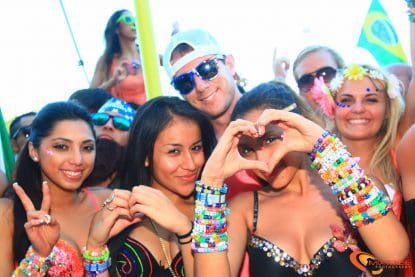 If you’re thinking of switching things up and changing the genre or musical feel drastically do you think this crowd you have right now will love it?
If you’re thinking of switching things up and changing the genre or musical feel drastically do you think this crowd you have right now will love it?
Again knowing your music collection very well will help you make that judgement call a little easier as you’ll know the next song inside out and whether or not it’ll work at this current moment in time. When you’ve changed things up at previous points in your set (if you have) did it work well then?
How will changing from the current musical genre work when you flip to a totally different one? Is the energy level going to go up or down? Sometimes you may want it to go down if people have gotten tired of rocking out like lunatics for a few songs. Easing them back down might save people from leaving the dance floor out of exhaustion.
These are the questions that should be going through your mind as you cue up your next track. It sounds like a lot to process while you’re also trying to think about beat-matching, when to transition, how to transition and checking levels and sound quality constantly.
In actual fact this crowd-reading analysis becomes second nature as you constantly do it throughout your sets. The more times you DJ the more background habit this becomes. This is why its a key skill every DJ needs and the best DJs will be able to handle with ease.
Making that DJ crowd-reading decision
With all these questions answered you’ll be able to make a quick decision as to whether the next track will work or whether you need to go hunting for a different one.
Its wise to have backup playlists and to know your music library well so that if you do decide to make a change you can quickly access what you need, giving yourself plenty of time to get your preferred track cued up and beat-matched if necessary.
Here’s where it gets interesting.
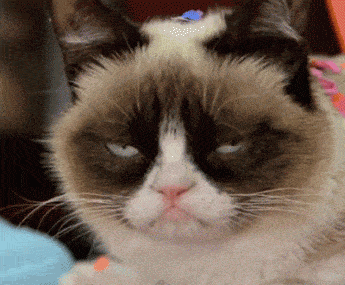 Whether you’re a newbie DJ or a seasoned pro DJ this will happen to you. The dance floor and its occupants move as one, controlling the energy of the party and at times they can be unpredictable. There will be times, possibly a few in one night where you’re analysis will be slightly off.
Whether you’re a newbie DJ or a seasoned pro DJ this will happen to you. The dance floor and its occupants move as one, controlling the energy of the party and at times they can be unpredictable. There will be times, possibly a few in one night where you’re analysis will be slightly off.
The track you thought would save a diminishing dance-floor crowd or would take them to the next level of DJ appreciation, suddenly falls flat on its face. It will happen from time to time.
But there’s one simple solution to this problem and its easier than you might think.
Are you ready for this revelation?
Here it is…
Find another track as quickly as you can that you think they will enjoy, an anthem or track with something familiar to them, and do a quick cut transition to get it playing urgently!
That’s it. No messing taking ages to make a sweeping seamless transition. No hunting through your music library for something subtle.
Just ditch the offending track as soon as you can, as the longer it plays the more it’ll turn people off. The more people that leave the dance floor the more those left on it will think again about dancing to the track. Time to get rid of it ASAP and move on my friend!
In the days of wedding DJ-ing this was always the challenge, to read the crowd and avoid needing to do this, but when things didn’t go to plan it was always the best answer. If people aren’t feeling that song, even its only been playing for 30 seconds or even less, get rid of it. The fact that you recognised that, did something about it quickly and showed the party you were aware will win you praises.
People want to dance and have fun, anything that gets in the way of that will be viewed poorly. So just get rid of that party-crushing tune and replace with something they’ll love.
Singular genre sets
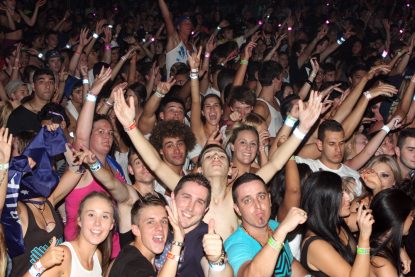 I fully recognise that this approach works best for those working with multiple genres in one night like private party mobile DJs. But it can still be applied to those working nightclubs where you’ve carefully crafted what you consider the perfect set list.
I fully recognise that this approach works best for those working with multiple genres in one night like private party mobile DJs. But it can still be applied to those working nightclubs where you’ve carefully crafted what you consider the perfect set list.
My advice is to always have a backup set list. One with a few more conservative tracks that are proven winners from past sets (where possible).
Some DJs actually create a playlist collection that has no specific order, reading the crowd as they DJ and just picking what they think will work best at the time. This is the hallmark of a truly great DJ who can actually craft a “sound” for the entire set based on the audience’s reactions. The musical journey is created together from the crowd’s feedback to the sounds being played.
Of course if a track does have an undesirable effect on the crowd you can quickly transition to another. Moving on quickly is always the best decision.
This doesn’t mean you shouldn’t take risks every once in a while. In fact being unique, throwing in some surprises and creating something truly memorable is what DJ-ing is all about. So take the risk from time to time and really master that crowd-reading skill every DJ should have.
We’ve touched momentarily on truly great DJs being able to take their audience on a musical journey and how memorable that can be. This is something i’ve always advocated, taking DJ-ing from merely mixing songs together, to actually bringing out deeper emotional responses to music that people really get a kick out of.
You have two choices here, one of which is riskier than the other but is definitely more complex to achieve.
Create your set list beforehand and stick to it (loosely)
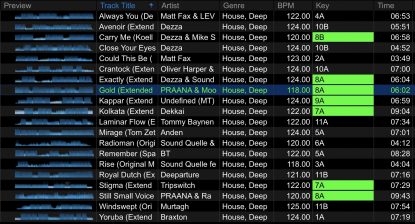 This is definitely the easier option and one many DJs go for. So don’t feel bad if its the one you do too.
This is definitely the easier option and one many DJs go for. So don’t feel bad if its the one you do too.
Going through your music library and selecting just the right tracks that maybe have matching keys or complimentary keys, or finding tracks that mix well together, building up energy levels and taking the crowd on a musical tangent before returning to the point of origin. Its all possible if you know your music well.
You can spend plenty of time in your home studio picking the right tracks, checking the transition well, adding hot cues and loop points so that when it comes to your DJ gig you can execute your pre-selected playlist with ease and confidence, knowing each track will work perfectly with the one before.
So whats this got to do with reading the crowd at a DJ gig?
While you may think your set will go off without a hitch, you’d be foolish not to keep an eye on the crowd and keep reading them for signs of appreciation or disappointment. What are you going to do if its just not being felt well by your audience?
This is why its very wise to have backup playlists at hand, on your computer or USB stick, just in case you realise you need to ditch the pre-flight plan and go with something more appropriate for the audience you have right in front of you.
Having a reduced set list to play from means you’re taking a risk that the crowd will love it, or at least like most of it. You’re second guessing what they will enjoy so lets hope you got it right.
You can always move on to the next track in your set list early and find new tracks to fill the time-slot at the end. Whatever you decide just make sure you keep reading the crowd and have options available to you so you don’t wreck their experience.
Create a record box of tracks and loops to pick and choose from
This is a wonderful method of creating a truly unique and memorable DJ set. One that not even you will know just how it’ll sound. It takes great creativity, intelligence and knowledge of music to pull this off. If you really want to wow your audience and keep them on your side this is how to do it.

So how is it done?
You’ll need to create a playlist in your DJ software that you can drop plenty of tracks in to, way more tracks than the duration of your set.
Then you’ll want to spend a lot of time searching through your tracks not just for entire songs that you could play but also for interesting loops in matching or complimentary keys. It could be percussion loops like the pack we sell right here, or it could be synth sounds, vocals and familiar nuggets of famous songs that work well as loops and one-hit samples.
Its best to do at least one rehearsal creating a set of equal length to your gig, to make sure your sounds can work well together, layering multiple sounds through remix-decks (if your software has that) or 4 deck mixing (again if your controller or setup allows).
So why do all of this?
 When it comes to your gig you now have the power to create something truly unique, not only that but with your crowd-reading skills you can follow the energy of the crowd, trying different loops and sounds to bring the energy level up, push it in a new direction and feed on it. You can even add effects to the samples on-the-fly to create entirely new sounds that will produce something entirely unique.
When it comes to your gig you now have the power to create something truly unique, not only that but with your crowd-reading skills you can follow the energy of the crowd, trying different loops and sounds to bring the energy level up, push it in a new direction and feed on it. You can even add effects to the samples on-the-fly to create entirely new sounds that will produce something entirely unique.
The best DJs in the world can do this, creating a constant feedback loop between the DJ and the crowd. The energy of the crowd are influencing what sounds the DJ will pick next and are in essence creating the music based on their response. Its an incredible way to DJ and one that creates truly memorable and unique sets, which is often what the promoter is after.
The risk? Well you may read the crowd wrong and create some jarring sounds that turn people off. But you can quickly rectify this by cutting the sounds that don’t work and bringing in those that do. Almost immediately too so your chances of saving the dance-floor are high.
Here’s a very quick example of mixing with samples and loops rather than transitioning between entire tracks can create a whole new experience for your crowd.
This approach is clearly more technically complex, so knowing your music library and your DJ hardware inside and out is vitally important to pulling it off. But if you can, wow, I’d love to hear that set!
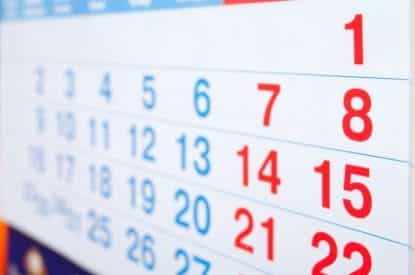 So now you know just what to do and why reading the crowd is such an important aspect of a DJ’s skill-set. But just how long does it take for a DJ to learn how to read the crowd?
So now you know just what to do and why reading the crowd is such an important aspect of a DJ’s skill-set. But just how long does it take for a DJ to learn how to read the crowd?
In my experience it’s a skill you constantly refine, so there is no end goal. As musical genres shift and popular tastes change you’re always chasing just what will work and trying to avoid the pitfalls of what wont.
Plus every venue is different, every year is different, your reputation for the genre of music you play can change and your own musical preferences too.
But I know you’re still hunting for an answer, wondering just how much effort you’ll need to put in before you can expertly read the crowd.
The honest answer is a few years. You can pick it up pretty quickly but to really make it a habit rather than a conscious exercise, Expect to be there after maybe 2 or 3 years of solid DJ-ing.
Don’t let this time-frame put you off, your passion for DJ-ing will see you through and it really is a skill you can methodically analyse as you DJ and improve over time.
Realistically it’ll take you maybe 20 – 30 DJ gigs to really understand how you can read the crowd and make changes that will have a positive impact. Along the way you’ll encounter plenty of wrong-reads but now you know what to do to save the gig and keep learning.
I’ve been DJ-ing since 1994 and I still occasionally make mistakes, especially at multi-genre gigs
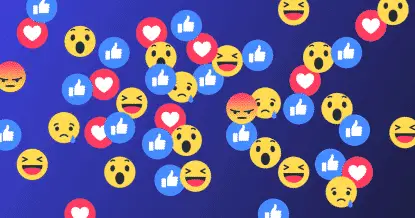 I just had to put this chapter in here as I’m sure after all this you’re thinking “So how do always get it right?”. Is that even possible? Well lets take a look.
I just had to put this chapter in here as I’m sure after all this you’re thinking “So how do always get it right?”. Is that even possible? Well lets take a look.
Its all about gauging the risk to reward. The higher the reward in terms of memorable DJ gig and positively engaged crowd, the more risk you run of reading the crowd wrong and upsetting them.
If for instance I set you the challenge of always changing the music genre every 2 tracks you’d soon understand how difficult it would be to read the crowd and know just which track to play next in order to keep them all happy.
On the other hand if I set you the challenge of keeping to one musical genre with no requirement to increase the energy levels of the crowd, just play a simple set with no deviations. You’d understand that crowd energy levels are less likely to fluctuate, but they’re also less likely to remember you at all.
So there’s a middle ground in between where you can create something memorable without taking such a big risk that you annoy people. Where exactly you sit in that scale from dull but low risk to memorable but high risk, is entirely up to you.
There are some key take-aways that will always help you so here’s some bullet points just to really nail the actions in to your brain.
- Always analyse the venue before the gig to see how it’ll influence the crowd
- Watch how people dance and move. A key sign of the energy levels in the room
- Listen out for audio feedback from the crowd, cheers, boos, laughter or signs people are talking instead of dancing
- Remember how well (or badly) previous genre changes or energy level changes worked for you
- Never stop analysing. Keep a constant eye out for changes
- Have backup tracks close at hand so you can quickly make changes if you know the next track is likely to bomb
- Calculate how much of a risk you’re willing to take to be memorable, unique, creative and loved by your audience!
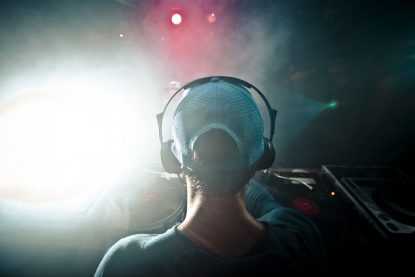 Rest assured all of the 5500+ words above will help you master the art of reading the crowd. It can be frustrating at times when you thought you had read it well and it all goes wrong. but you know just what to do in order to rescue the gig, so all is not lost.
Rest assured all of the 5500+ words above will help you master the art of reading the crowd. It can be frustrating at times when you thought you had read it well and it all goes wrong. but you know just what to do in order to rescue the gig, so all is not lost.
The greatest thing about reading the crowd is that its a trick you’ll employ at every gig, constantly throughout the show, so it becomes part of the makeup of your DJ career.
Over time this habit almost sinks in to the background, something you’re almost unaware you’re doing but is definitely there every time you load up the next track you planned (or maybe didn’t plan) to play. This makes it an easier task to administer the longer your DJ career goes on.
Its one of the biggest differentiators between new DJs and veteran DJs and its often why the older DJs still get so many gigs. Their hit-rate for reading the crowd perfectly and giving them above and beyond what they wanted is higher than new DJs who have yet to master the crowd-reading skill.
Keep at it, you’ll get there!
More great DJ advice for you
Wondering what to read next? Here’s what we think will help you the most.

